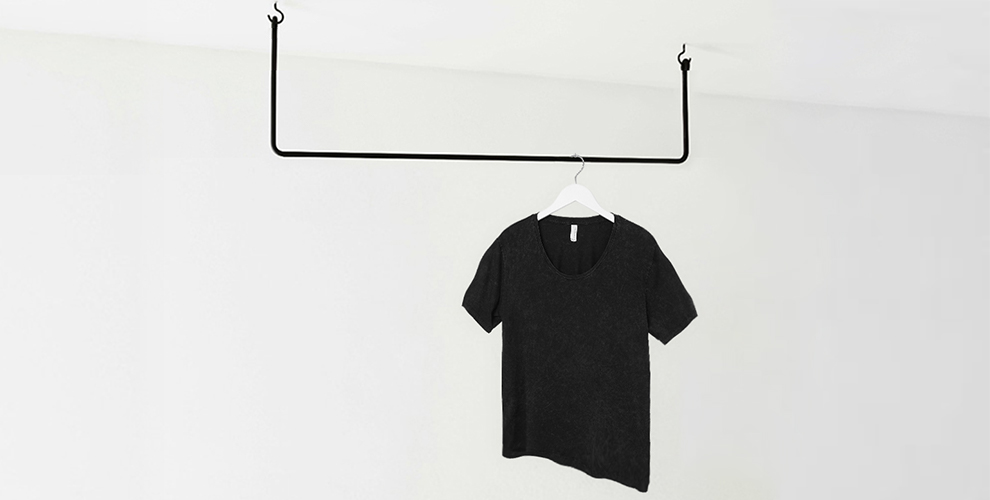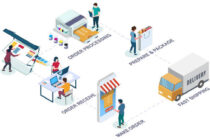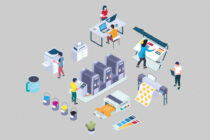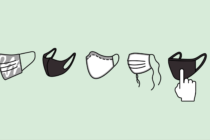We totally understand that custom printed t-shirts can get expensive (especially when you’re purchasing large quantities). With that said, many companies opt for less-than-stellar pieces that are destined for the trash. The solution? Next time you’re in need of new tees, purchase high quality blank t-shirts that your customers will actually want to wear. Read on to discover why investing in retail quality shirts will gain your brand respect and revenue.
Retail vs. Standard Quality Tee
It’s simple. Think about the tees that you reach for time and time again. They’re the retail quality pieces that are buttery soft, light, and fit better than the rest, right? We thought so. The ones you aren’t reaching for as much are standard shirts. Standard shirts are far-from-comfortable, far-from-stylish, and tend to have a boxy, sloppy silhouette (check out this post for more on these differences).
Now that we’ve made a distinction between retail quality shirts and standard shirts, it’s important to decide which route you’d like to take. And while we totally understand that budgets can often be a determining factor in the shirt you ultimately opt for, we’re big believers that looking at the value beyond that point can be extremely beneficial to your brand. Whatever the use of your shirts (promotional or retail) we will show you how going with a more expensive shirt will actually be a better investment for you in the end.
Cost-Benefit Analysis: When You Are Reselling a tee
If you are in the market for tees to print and re-sell as your own, going with a premium shirt will allow you to make more money in the end. For this analysis we recommend looking at the retail value of the shirt. Customers will always be willing to pay more for a soft shirt, and if you cut corners here and go with a standard tee, you run a high risk that your tees won’t sell at all. For this analysis we’ll compare a fashion-forward Flowy tee with a women’s standard tee.
SHIRT A (standard women’s tee) = $3/shirt
SHIRT B (BELLA+CANVAS Flowy tee) = $6/shirt
For a standard women’s tee, you could probably get away with re-selling the tee with a print for $20 (We’ll assume the printing cost is the same for each shirt so we’ll run the numbers without printing cost). Let’s say you buy 50 shirts and sell through all of them all, you would net a profit of $850 ($20 x 50 shirts minus the $150 investment).
Standard Women’s Tee: $20 x 50 minus $150 = $850
If you opt for a trend-forward and ultra-soft Flowy tee (a collection based off of what is popular in the retail world), you can easily sell the shirts for $35 each. So if you sell through 50 shirts at $35 a shirt you net a profit of $1,200. ($35 x 50 shirts minus the $300 investment).
Women’s Flowy Tee: $35 x 50 minus $150 = $1200
In this conservative estimate, you’d make $550 more buy investing in a higher quality shirt up-front. We say conservative, because this doesn’t even take into account the likelihood of not selling through a lower quality shirt. Tee shirts that aren’t on-trend or aren’t as soft, are less likely to sell, and if your shirts don’t sell, this gap widens even more.
Cost-Benefit Analysis: Promotional Tees
When determining the value of promotional tees, we recommend looking at your investment from a cost per impression point. Impressions are the number of times your shirt is worn along with the amount of people that may see it. It’s simple: the more someone rocks your shirt, the less your cost per impression point is. Here’s an example:
SHIRT A (standard tee) = $1.89/shirt
SHIRT B (BELLA+CANVAS combed and ring-spun tee) = $2.89/shirt
Imagine that a customer only wears the standard $1.89 shirt 2 times because it just isn’t that comfortable. Then, imagine that each time it was worn, 10 people noticed the shirt, which means 20 total impressions were made. The cost per impression is then $0.09 ($1.59 per shirt/40 total impressions).
Standard Shirt: $1.89/20 impressions = $0.09/impression
Now onto the retail quality shirt that’s $2.89/shirt. Imagine that people love it because it’s comfortable, soft, and looks stylish with other items in their wardrobe. Imagine that they wear it 6 times (which is a conservative estimate), and that each time they wear it, 10 people take notice of the shirt. If 10 people notice it, that’s 60 total impressions, which means that the cost per impression is only $0.05 ($2.89 per shirt/60 total impressions).
Retail Shirt: $2.89/60 impressions = $0.05/impression
This holds true as you continue to step up your quality. If you opt for a Triblend or Flowy tee, these tees are likely to be worn even more frequently than a basic jersey tee due to their extreme softness, and the more a shirt is worn, the lower the cost per impression. So although a $1-$2 price difference between shirts may seem significant, you can see how much the difference makes in marketing. And from a marketing standpoint, this is an easy and inexpensive way to grow your brand now and forever.
If you’re a business owner, it’s important to use shirts as a way to promote your business. Whether it’s a race, tournament, giveaway, or business event, producing branded shirts that people will want to wear will not only grow your brand’s awareness and gain more impressions, but it will also generate valuable new business for you!
Conclusion
So if you are a retail brand, an athletic studio, an artist, make sure you accurately assess the resell value of the tees you create. It’s true what they say, the more you put in, the more you get out, so spending just a little more for your initial investment, will set you up to be in a position to make a much bigger profit.
Ready to get your business booming? Find retail quality shirts your customers will love from BELLA+CANVAS.






1 Comments